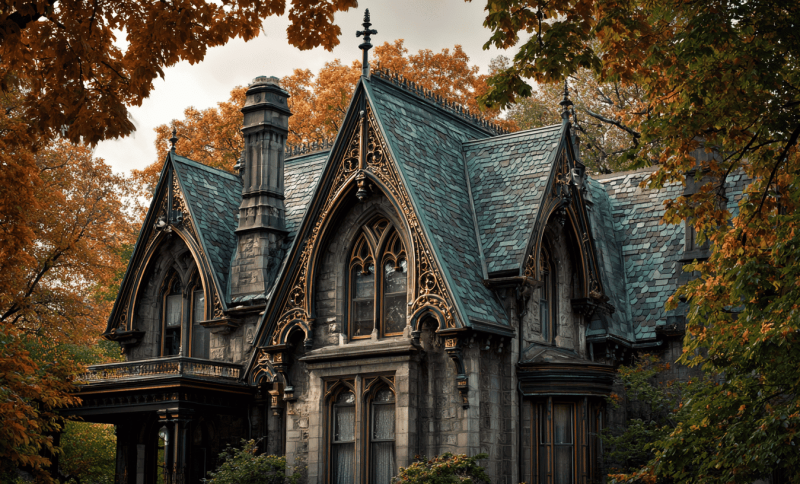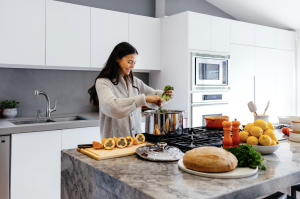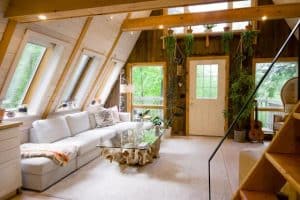A Gothic Revival house stands out with its dramatic pointed arches, steep gables, and fairytale charm that captures imaginations everywhere.
These romantic homes trace their roots to medieval cathedrals but were adapted beautifully for residential living during the 1800s.
From grand Victorian mansions to cozy Carpenter Gothic cottages, Gothic Revival architecture features intricate woodwork, stained glass, and vertical design.
If you’re an architecture enthusiast, potential homeowner, or simply curious about historic homes, understanding Gothic Revival houses opens a window into America’s rich architectural heritage.
A Brief History of Gothic Revival Architecture
Gothic Revival architecture traces its roots to the soaring cathedrals of medieval Europe, characterized by their distinctive pointed arches and ribbed vaults.
The movement began in 18th-century England when visionaries like Horace Walpole designed Strawberry Hill House as an early Gothic experiment.
By the 1800s, the style flourished across England before spreading to America and beyond. During the Victorian era, Gothic Revival became Victorian Gothic houses, blending medieval romantic elements with modern needs.
Architects softened the grandeur of cathedrals into charming homes with steep gables, decorative trim, and vertical lines. The Neo-Gothic style continues to inspire modern buildings, showcasing its classic appeal.
Characteristics of Gothic Homes
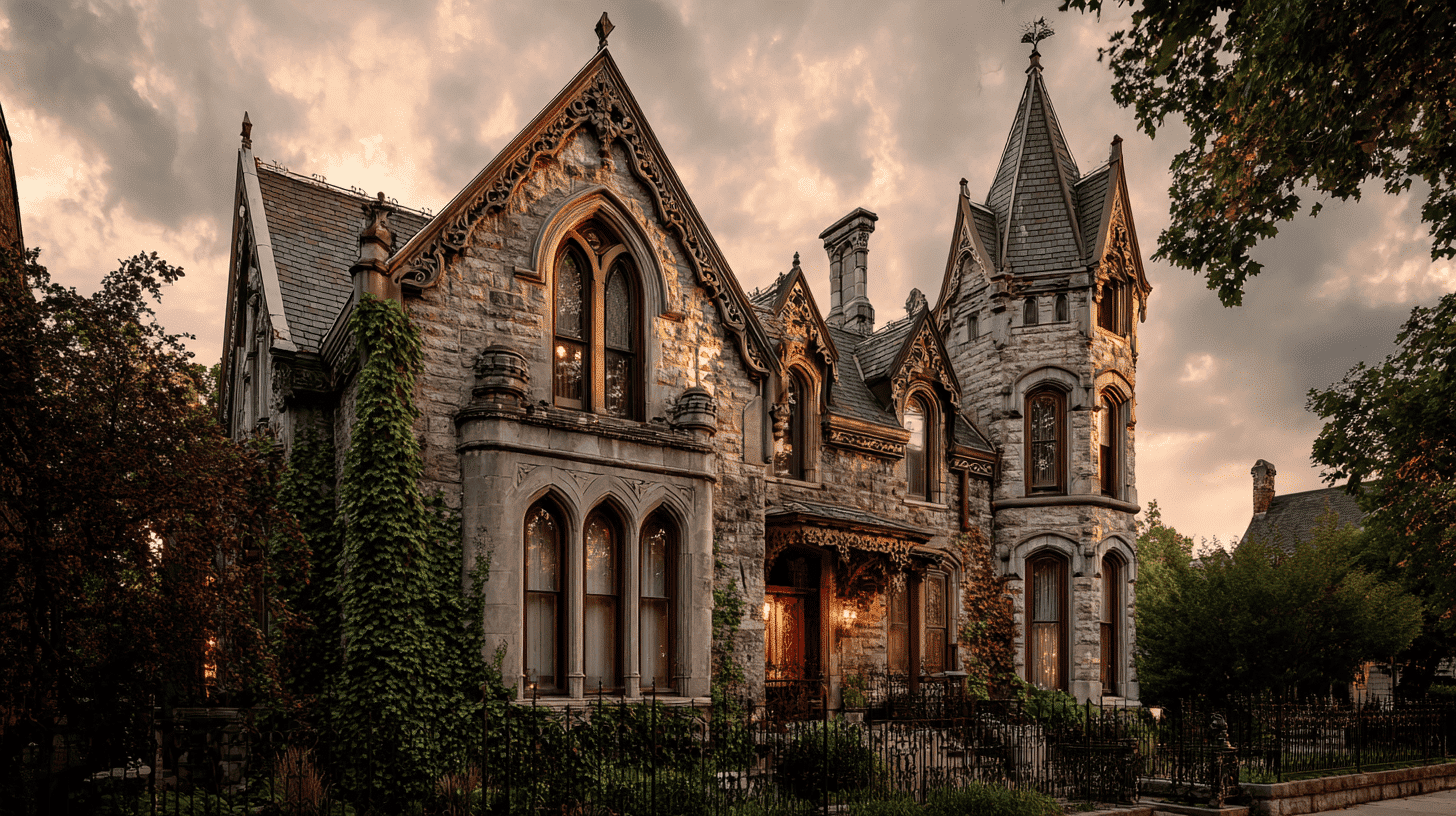
Gothic homes allure with their dramatic medieval-inspired details and romantic charm. These distinctive features make Gothic Revival houses instantly recognizable and beloved by architecture enthusiasts everywhere.
- Pointed Arches and Lancet Windows: Tall, narrow windows with pointed tops create a lavish vertical look.
- Steeply Pitched Roofs and Cross Gables: Sharp roof angles and multiple peaks give Gothic homes their castle-like appearance.
- Decorative Trim and Bargeboards: Ornate wooden gingerbread trim adorns roof edges and porches with intricate patterns.
- Towers, Spires, and Finials: These decorative elements sit atop roofs, creating a fairytale-like skyline.
- Stained Glass and Leaded Windows: Colorful glass panels bring beauty and filtered light into Gothic interiors.
Inside, you’ll find vaulted ceilings, rich dark wood, and Gothic motifs that echo the exterior grandeur. Together, these features create homes that feel both historic and glamorous.
The Gothic Victorian House: A Romantic Hybrid
Gothic Victorian houses blend two powerful styles from the 1800s, when Victorian-era builders adopted Gothic Revival and added their own flair.
These homes feature ornate layering, colorful polychrome brickwork, and eclectic mixing of decorative elements that Victorians loved.
While pure Gothic Revival houses stay closer to medieval cathedral designs, Gothic Victorian homes are more playful and elaborate with extra trim, varied textures, and bolder colors.
The exterior showcases pointed arches and steep gables covered in gingerbread details, while interiors combine Gothic elements like dark woodwork with Victorian comforts such as cozy parlors and patterned wallpapers.
This romantic hybrid created some of America’s most charming and distinctive historic homes.
Real Gothic Homes: Famous Examples & Regional Variants
Real Gothic homes tell interesting stories across different regions and eras. From grand English estates to charming American cottages, these examples show how the Gothic Revival adapted to local materials, budgets, and tastes.
1. Strawberry Hill House (UK)
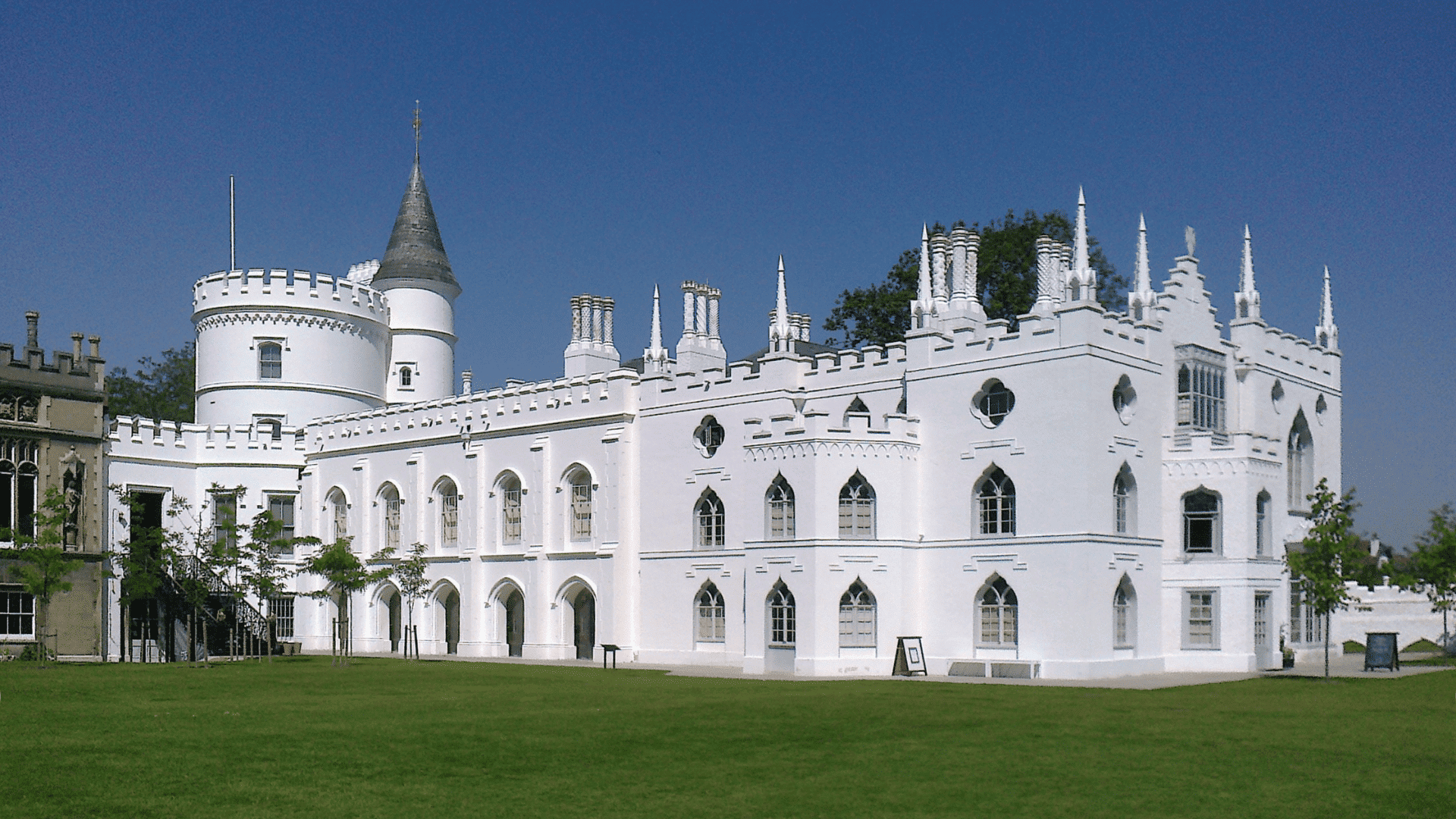
Strawberry Hill House in London launched Gothic Revival architecture in the 1740s. Writer Horace Walpole created this whimsical estate, featuring pointed arches, battlements, and decorative tracery, which reimagined the medieval style for homes.
His playful interpretation inspired architects across Europe and America, proving Gothic elements could create charming residences beyond solemn cathedrals.
2. Union House, Illinois
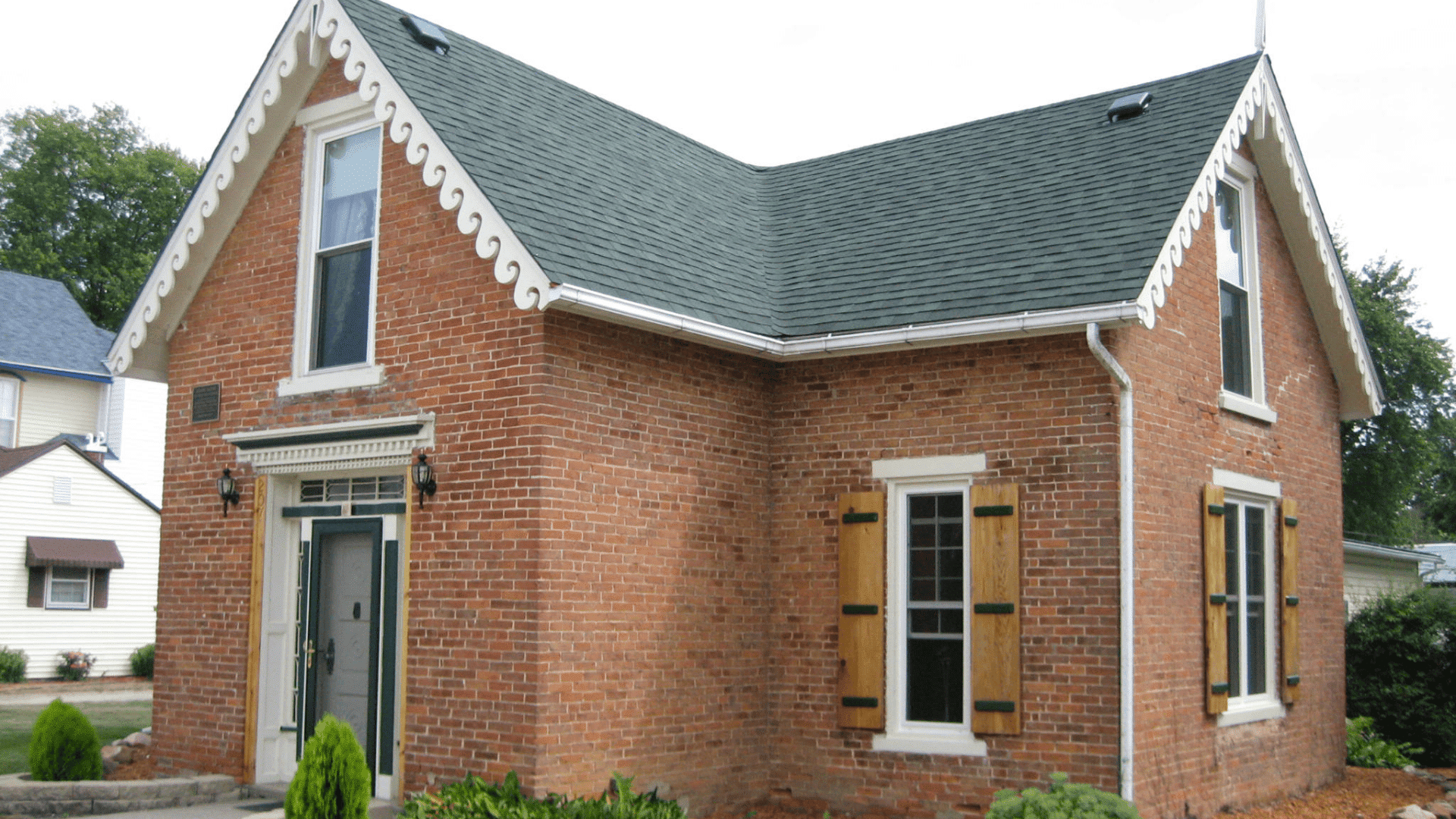
Union House in Illinois demonstrates that Gothic Revival is well-suited for modest homes. This charming residence features pointed windows and steep gables adapted for comfortable family living.
Simple yet graceful details create romantic character without overwhelming the home’s scale, showing how Gothic principles enhanced ordinary residences across America.
3. Carson Mansion, Eureka (USA)
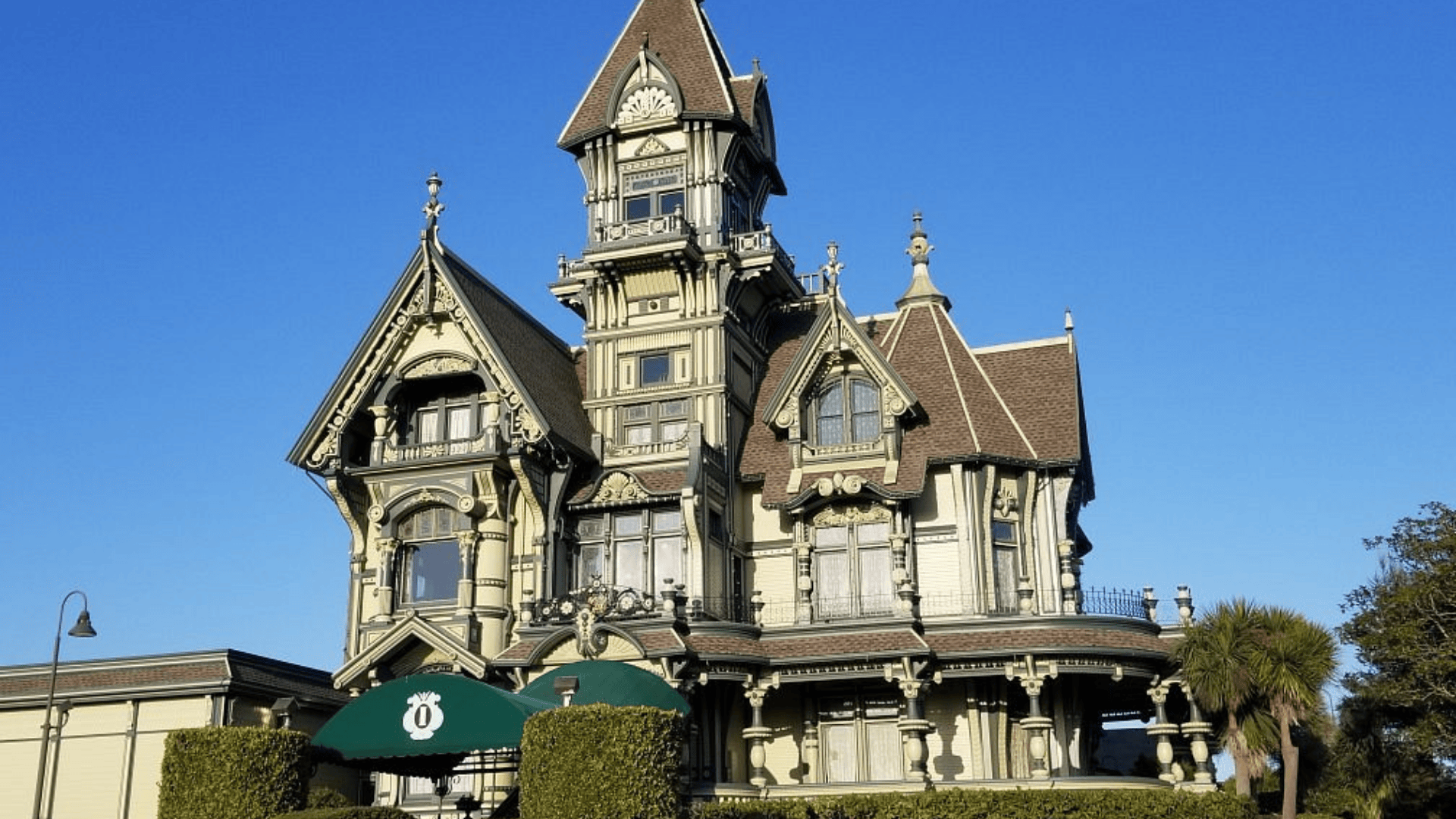
Carson Mansion in Eureka, California, represents Gothic Victorian architecture at its finest. Built in the 1880s for lumber baron William Carson, this ornate masterpiece combines Gothic arches with Victorian excess.
Towers, intricate woodwork, and vibrant colors demonstrate exceptional craftsmanship. This architectural gem showcases the dramatic potential of Gothic Victorian residential design.
4. Ashe Cottage (USA)
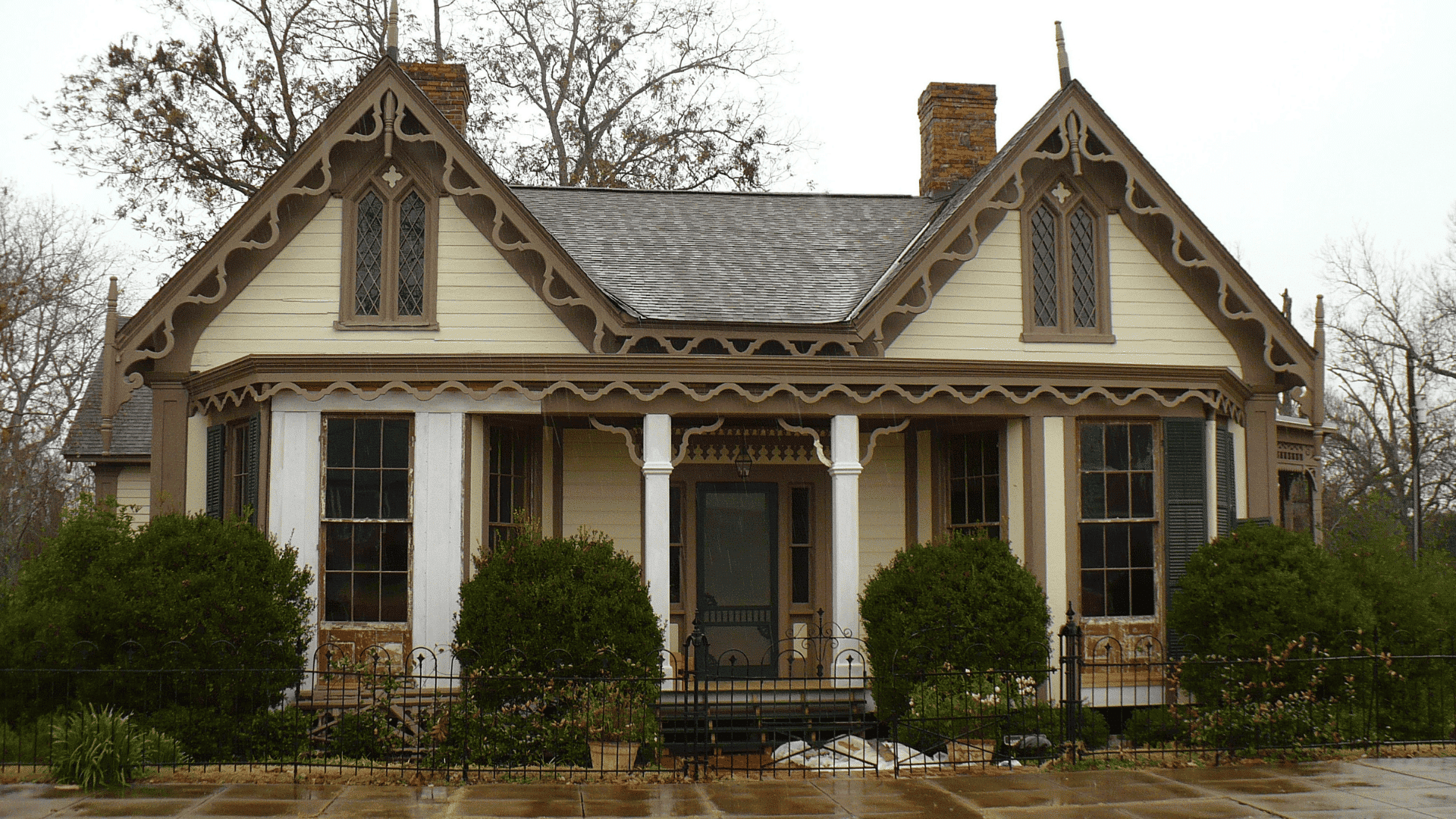
Ashe Cottage in Alabama showcases beautiful Carpenter Gothic architecture with classic charm. This historic residence features intricate gingerbread trim, pointed arch windows, and steep gables demonstrating skilled craftsmanship.
Built with affordable wood construction, the cottage represents how the Gothic style became accessible to American homeowners. Ashe Cottage remains a treasured example of Carpenter Gothic romance in the South.
Why Gothic Revival Endures: Cultural Meaning & Legacy
Gothic Revival emerged as a reaction against plain neoclassical design and cold industrialization during the 1800s.
Architects like Augustus Pugin championed the Gothic style for its moral meaning and honest craftsmanship found in medieval buildings. The movement spread beyond homes into churches, universities, and civic buildings that still define many campuses today.
Modern architects continue to draw inspiration from neo-Gothic designs and subtle Gothic touches.
People remain intrigued by Gothic homes in the 21st century because they offer drama, exceptional craftsmanship, and nostalgic romance that mass-produced houses cannot match.
These architectural treasures connect us to history while satisfying our desire for beauty and character.
How to Recognize & Appreciate Local Gothic Homes?
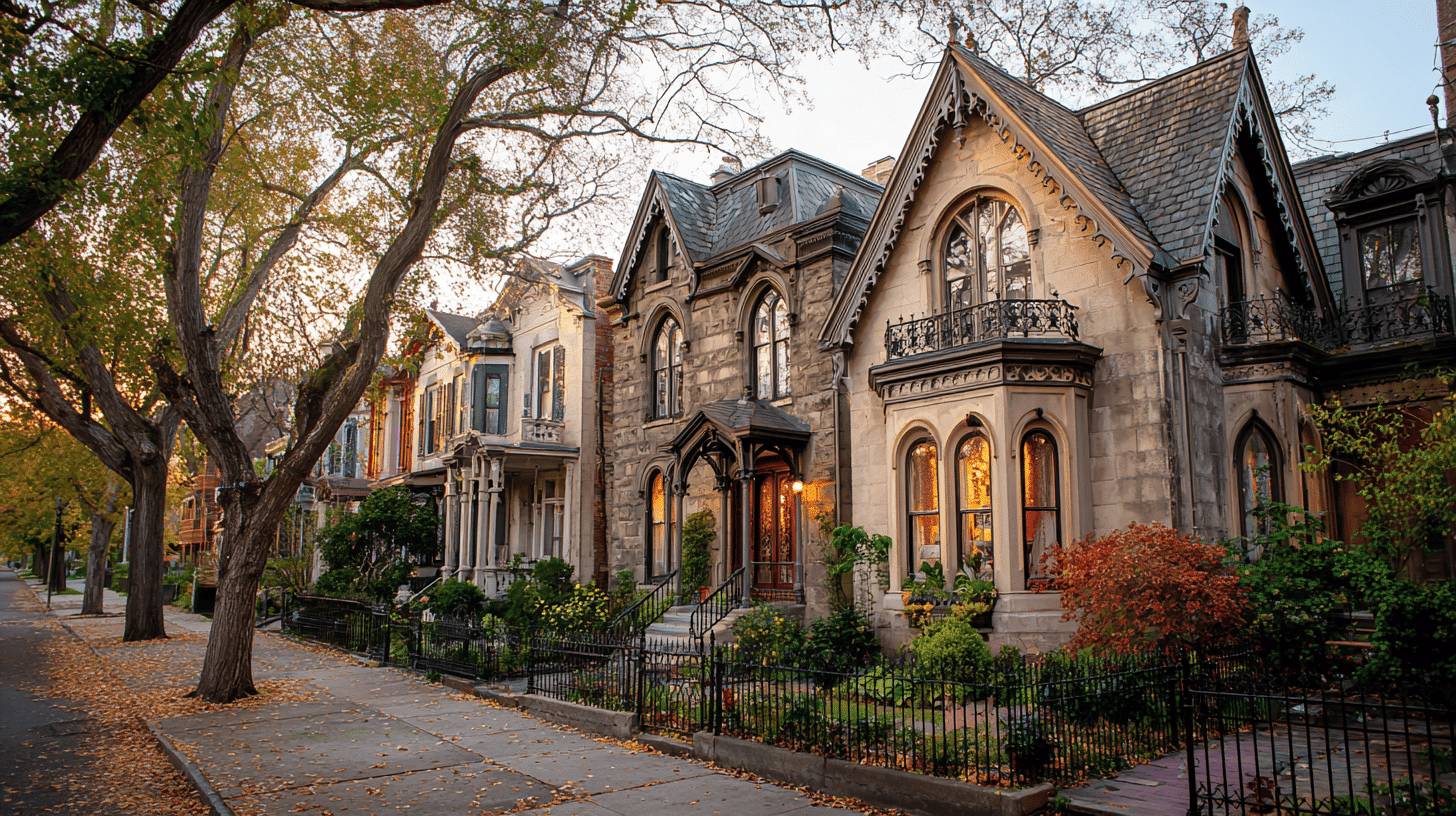
Finding Gothic Revival houses in your neighborhood becomes easier once you know what to look for. These tips help you spot Gothic features during walks or drives through historic districts.
- Look for Pointed Arch Windows and Steep Roof Peaks: These signature features identify Gothic homes.
- Check Roof Edges for Decorative Trim: Gingerbread bargeboards reveal Gothic Revival origins.
- Notice Vertical Lines and Narrow Proportions: Gothic homes emphasize height with tall, narrow windows.
- Watch for Later Additions that Hide Original Features: Modern siding may cover authentic Gothic elements.
- Use a Spotting Checklist on Your Phone: Save key features to reference while exploring.
Start noticing the Gothic Revival gems hiding in plain sight around your community. Every neighborhood holds architectural treasures waiting to be found and appreciated.
That’s a Wrap
The Gothic Revival house remains an inspiring architectural treasure.
From Strawberry Hill’s pioneering design to the charming Carpenter Gothic cottages that have become a hallmark of American architecture, these homes prove that beauty and craftsmanship never go out of style.
If you’re restoring a historic gem or simply appreciating Gothic features in your neighborhood, these dramatic structures connect us to romantic ideals and exceptional artistry.
Their pointed arches and ornate details remind us that homes can be both functional and magical. Have you spotted a Gothic Revival house in your area? Share your favorite examples in the comments below!








